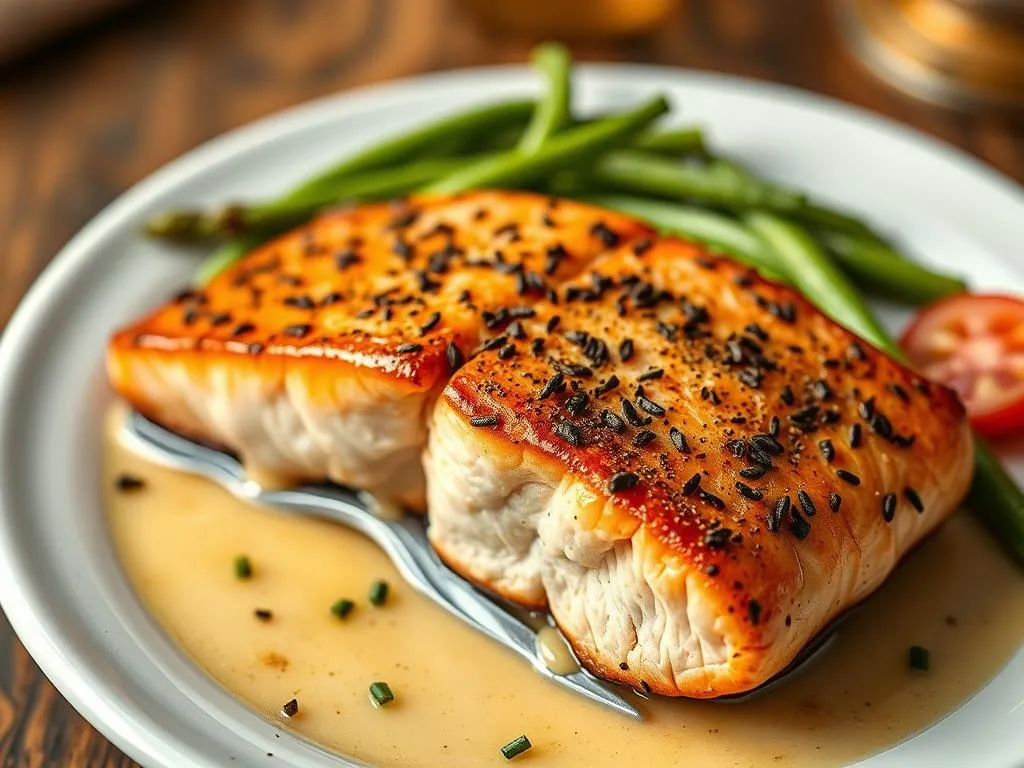
Introduction
Proper nutrition is vital for maintaining the health and well-being of your dog. Just like humans, our canine companions require a balanced diet that meets their unique nutritional needs. One exceptional ingredient that can enhance your dog’s diet is salmon. Rich in essential nutrients, salmon can provide significant health benefits for dogs. This article aims to guide pet owners on how to cook salmon for dogs safely and effectively, ensuring you can incorporate this nutritious fish into your pet’s meals without any concerns.
Understanding Dog Nutrition
Importance of Balanced Nutrition for Dogs
A well-balanced diet for dogs includes a mix of macronutrients and micronutrients.
- Macronutrients include:
- Proteins: Essential for growth, repair, and maintenance of body tissues.
- Fats: Provide energy, help in the absorption of vitamins, and contribute to healthy skin and coat.
-
Carbohydrates: Serve as a source of energy and support digestive health.
-
Micronutrients, such as vitamins and minerals, play critical roles in various bodily functions, including immune response and bone health.
Common Nutritional Needs by Dog Breed and Age
Different life stages and breeds have varying nutritional requirements.
- Puppies require more protein and calories for growth, while adult dogs need a balanced diet to maintain their health.
- Senior dogs often need fewer calories but still require high-quality nutrients to support aging joints and cognitive function.
- Small breeds may have higher metabolic rates than large breeds, necessitating different feeding strategies.
Benefits of Salmon for Dogs
Nutritional Profile of Salmon
Salmon stands out as a high-quality protein source, rich in essential nutrients that can significantly benefit your dog.
- High-quality protein: Supports muscle health and overall growth.
- Omega-3 fatty acids: Known for their anti-inflammatory properties, omega-3s can promote healthy skin and a shiny coat.
- Vitamins and minerals: Salmon is packed with B vitamins (like B12 and niacin) and selenium, which contribute to energy metabolism and immune function.
Health Benefits of Feeding Salmon
By incorporating salmon into your dog’s diet, you may notice several health improvements:
- Improved coat condition: Omega-3s help reduce skin irritation and improve coat shine.
- Benefits for joint health: Anti-inflammatory effects can aid in reducing arthritis symptoms.
- Support for cognitive function and heart health: Nutrients in salmon can promote brain health and reduce the risk of heart disease.
Safety Considerations When Cooking Salmon for Dogs
Choosing the Right Salmon
When selecting salmon for your dog, you have two primary options: wild-caught and farmed salmon.
- Wild-caught salmon is often considered the healthier option, as it typically contains fewer contaminants and higher omega-3 levels.
- Regardless of the type, always ensure you source fresh, high-quality fish to avoid harmful additives.
Potential Risks and How to Avoid Them
While salmon is generally safe for dogs, there are some risks associated with feeding raw salmon, such as parasites and bacteria. To mitigate these risks:
- Cook the salmon: Cooking eliminates harmful pathogens and parasites. Recommended cooking methods include boiling, baking, or grilling.
- Always inspect the fish for bones and skin, as these can pose choking hazards and digestive issues.
Portion Control and Frequency of Salmon in Diet
Salmon should be a treat rather than a primary protein source. The frequency and portion size will depend on your dog’s size:
- Small dogs may only need a few ounces once a week.
- Large dogs can handle a larger portion but should not exceed recommended serving sizes.
Consult with your veterinarian for tailored advice regarding your dog’s specific dietary needs.
How to Cook Salmon for Dogs
Preparing the Salmon
Before cooking, you must properly prepare the salmon:
- Cleaning: Rinse the salmon under cold water.
- Filleting: Remove the skin and any bones, as these can be harmful to dogs.
Cooking Methods
Boiling Salmon
Boiling is one of the simplest and safest methods to prepare salmon for dogs.
- Fill a pot with water and bring it to a boil.
- Place the cleaned salmon in the pot.
- Cook for about 10-15 minutes, depending on the thickness of the fillet, until it flakes easily with a fork.
- Let it cool before serving.
Baking Salmon
Baking salmon is another healthy option that retains many nutrients.
- Preheat your oven to 350°F (175°C).
- Place the salmon on a baking sheet lined with parchment paper.
- Bake for 15-20 minutes, or until fully cooked and flaky.
- Allow it to cool before serving.
Grilling Salmon
Grilling can add a delightful flavor to the salmon, but caution is needed to avoid harmful charred bits.
- Preheat your grill to medium-high heat.
- Oil the grill grates to prevent sticking.
- Grill the salmon for 5-7 minutes on each side, depending on thickness.
- Let it cool, and remove any charred areas before serving.
Adding Nutritional Extras
To enhance the nutritional value of the salmon, consider adding healthy toppings:
- Vegetables: Steamed carrots, peas, or zucchini are excellent choices.
- Rice or quinoa: These grains can add fiber and additional nutrients.
Ensure you avoid harmful ingredients such as salt, spices, or sauces, which may be unsafe for dogs.
Serving Suggestions and Storage Tips
How to Serve Salmon to Your Dog
You can serve salmon in various ways:
- Mixing with regular dog food: This can make the meal more appealing and ensure a balanced diet.
- Serving alone: Cooked salmon can be a delicious treat.
- Dog-friendly salmon treats: Consider making homemade salmon treats for special occasions.
Storing Cooked Salmon
To keep cooked salmon fresh:
- Refrigeration: Store in an airtight container for up to 3 days.
- Freezing: For longer storage, freeze in portions for up to 3 months.
Always ensure the salmon is fully thawed before serving it to your dog.
Alternatives to Salmon in Dog Diets
Other Fish Options for Dogs
If your dog enjoys fish, consider these alternatives:
- Sardines: Rich in omega-3s and often available canned in water (without additives).
- Trout: Another safe fish option, high in protein and omega fatty acids.
Non-Fish Protein Sources
If you want to diversify your dog’s protein sources, consider:
- Chicken: Lean and easily digestible.
- Beef: Rich in protein but be mindful of fat content.
- Plant-based options: Lentils and chickpeas can provide protein for dogs with specific dietary needs.
Conclusion
Incorporating salmon into your dog’s diet can be a rewarding and nutritious choice. With its rich nutritional profile and numerous health benefits, salmon can enhance your dog’s overall wellness when prepared correctly. Always ensure you are cooking salmon safely and consult with your veterinarian to tailor your dog’s diet to their specific needs. By taking these steps, you can enjoy the peace of mind that comes with feeding your dog a healthy, balanced diet that includes this beneficial fish.
FAQs
Can I feed my dog raw salmon?
Feeding raw salmon is risky due to potential parasites and bacteria. Cooking salmon thoroughly is recommended.
How much salmon can I feed my dog?
Portion sizes depend on your dog’s size. It’s best to consult your veterinarian for specific recommendations.
Is salmon safe for all dogs?
Most dogs can safely eat salmon, but always check for allergies or sensitivities, especially in new foods.
Can I add spices to the salmon?
Avoid adding any spices, salt, or sauces when preparing salmon for your dog, as these can be harmful.
How can I tell if my dog is allergic to salmon?
Watch for symptoms like itching, digestive upset, or unusual behavior after introducing salmon. Consult a vet if you suspect an allergy.
By following this guide on how to cook salmon for dogs, you can ensure that your furry friend enjoys a delicious and nutritious meal while keeping their health and safety a top priority.









